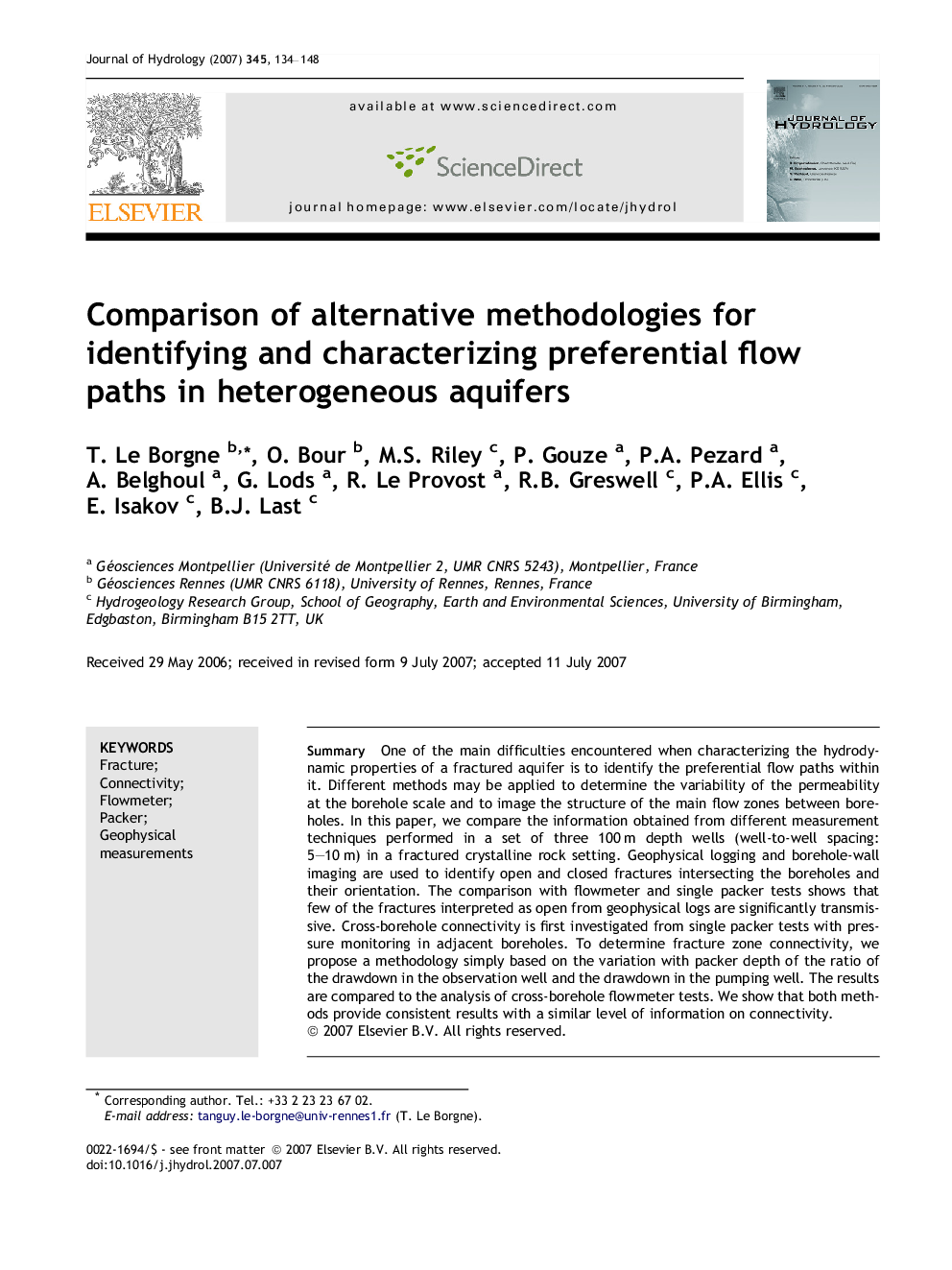| Article ID | Journal | Published Year | Pages | File Type |
|---|---|---|---|---|
| 4579513 | Journal of Hydrology | 2007 | 15 Pages |
SummaryOne of the main difficulties encountered when characterizing the hydrodynamic properties of a fractured aquifer is to identify the preferential flow paths within it. Different methods may be applied to determine the variability of the permeability at the borehole scale and to image the structure of the main flow zones between boreholes. In this paper, we compare the information obtained from different measurement techniques performed in a set of three 100 m depth wells (well-to-well spacing: 5–10 m) in a fractured crystalline rock setting. Geophysical logging and borehole-wall imaging are used to identify open and closed fractures intersecting the boreholes and their orientation. The comparison with flowmeter and single packer tests shows that few of the fractures interpreted as open from geophysical logs are significantly transmissive. Cross-borehole connectivity is first investigated from single packer tests with pressure monitoring in adjacent boreholes. To determine fracture zone connectivity, we propose a methodology simply based on the variation with packer depth of the ratio of the drawdown in the observation well and the drawdown in the pumping well. The results are compared to the analysis of cross-borehole flowmeter tests. We show that both methods provide consistent results with a similar level of information on connectivity.
